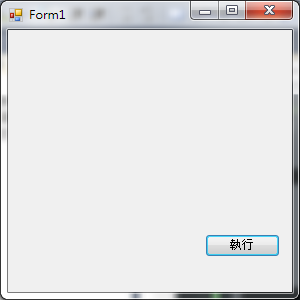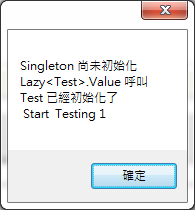摘要:System.Lazy 延遲初始化
System.Lazy<T> 類別使得將物件延遲初始化和延遲執行個體化的工作變得簡單。藉由將物件延遲初始化,您不必再事先建立可能永遠都用不到的物件,而且可以將物件延到初次存取該物件時再初始化。
運用Design Pattern中的 Singleton Pattern,可以更了解效果
public class Singleton
{
private static Singleton test;
private string str = " Testing";
private Singleton(int data)
{
str = " Start " + str + " " + data;
}
public static Singleton getInstance(int data)
{
if (test == null)
test = new Singleton(data);
return test;
}
public static Singleton getObject()
{
return test;
}
public string getMsg()
{
return str;
}
}
前端程式
public partial class Form1 : Form
{
public Form1()
{
InitializeComponent();
}
Lazy lazy = null;
Singleton tObject = null;
private void button1_Click(object sender, EventArgs e)
{
string sRes = "";
this.lazy = new Lazy(() => Singleton.getInstance(1));
//取得Singleton
tObject = Singleton.getObject();
if (tObject == null)
{
sRes += "Singleton 尚未初始化" + Environment.NewLine;
}
//Singleton實體化
if (this.lazy.Value != null)
{
sRes += "Lazy.Value 呼叫" + Environment.NewLine;
}
//重新取得Singleton
tObject = Singleton.getObject();
if (tObject != null)
{
sRes += "Test 已經初始化了" + Environment.NewLine;
}
else
{
sRes += "Test 尚未初始化" + Environment.NewLine;
}
sRes += tObject.getMsg();
MessageBox.Show(sRes);
}
}
前端畫面
執行結果
流程說明



